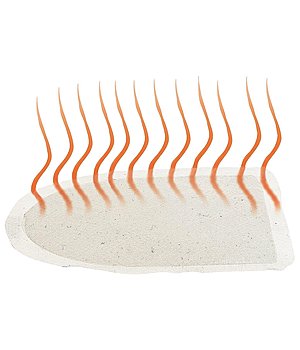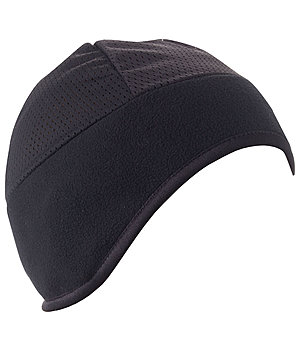
Dog Collars & Harnesses
- Frequently asked questions
- What should I look out for when choosing a dog harness?
- Which is better - a dog collar or dog harness?
- What size dog harness does my dog need?
- What are the advantages of a dog harness?
- Which collar is suitable for my dog?
What should I look out for when choosing a dog harness?
A dog harness is often considered more dog-friendly than a collar as it does not apply point pressure to the throat. However, for a dog harness to be comfortable for the dog to wear, it should be correctly adjusted. When buying a well-fitting dog harness, the body shape and size of the dog and the purpose of the harness are crucial, which is why the following points are important:
- Freedom of movement
- Breathing freedom
- Adjustable features to accommodate growth
- Pressure distribution
- Padding
- Lightweight, quick-drying material
- Type of dog harness
Ensure the dog harness has the proper fit. The belly strap should (for large dogs) be positioned a hand's width behind the elbow in the rib area. This prevents it from cutting into the elbow while also avoiding pressure on the soft abdominal region.
Particularly for puppies, a dog harness with numerous adjustment options is beneficial, allowing it to grow with them to some extent.
To ensure your dog can breathe comfortably, the harness should sit above the highest point of the sternum. Additionally, it should have a wide chest flap to distribute pulling forces over a larger area. For this reason, you should generally opt for wide straps or padded straps. Naturally, the strap width should be appropriate for the size of your dog. For an even greater level of comfort, soft padding, including on the closures, is recommended.
All the aforementioned points are irrelevant if the harness does not suit the dog's build. There is a wide range of dog harness types, with some models restricting the dog's maximum stride length. A well-fitting front-clip or Y-shaped harness is therefore a good choice for many dog breeds.
Which is better - a dog collar or dog harness?
This question cannot be answered in favour of one or the other, as both have their advantages and justifications. Ideally, a dog should be accustomed to both collar and harness and walk comfortably and loosely in either. The prerequisite here is that both are optimally adapted to the dog.
Since a dog harness can distribute pulling forces better than a collar, it is better to put on a harness in some situations. Such situations may include:
- The dog would pull on the lead, for example when cycling or jogging
- When using extendable and tracking leads
- For dogs that easily slip out of their collar
- For anxious dogs requiring additional security measures
- For dogs with chronic respiratory distress
- Puppies, young dogs, and dogs in training
- When transporting the dog in the back seat
What size dog harness does my dog need?
Dog harness models are usually offered in different sizes. To determine the correct size of the dog harness, the following information is necessary: the chest circumference and neck circumference of the dog.
The more crucial measurement is the chest girth, which should be taken two finger widths behind your dog's front legs. To measure the neck circumference, place the tape measure around the neck where the harness should sit. Ensure you can fit a finger between the tape measure and the dog to prevent the harness from being too tight. Compare your results with the size chart of your chosen harness. If your measurement falls between two sizes, always opt for the larger one.
Important: Do not rely on the manufacturer's rough size recommendations, but rather try different harnesses directly on your dog. The harness must fit ideally so that your dog feels full freedom of movement while walking. Because the manufacturer's recommendations do not take into account the individual conditions of the dog, such as its weight.
What are the advantages of a dog harness?
The advantages vary greatly depending on the dog harness model:
- Better pressure distribution across shoulders and chest
- Relief for the cervical spine, trachea, and larynx
- Can promote social behaviour as the neck is important for body language
- Various models for different purposes
- Numerous adjustment options
- Quick intervention in tricky situations
- "Escape artists" and anxious dogs cannot wriggle free.
Which collar is suitable for my dog?
A dog harness isn't always the better choice, as some dogs won't get used to wearing one. Or if your dog wears a dog coat that doesn't fit under a harness. Moreover, a collar is quickly put on.
When buying a dog collar, pay attention to the following points:
- Width of the collar
- Fit of the collar
- Secure, stable fastener
- Level of comfort
- Dog lead and collar match in colour
Naturally, a dog collar should come with a ring for attaching the lead. Those who value design can buy a lead set where the dog lead and collar are visually coordinated.
For walks in the dark, we recommend light-up dog collars. These make your dog visible to other road users before they are illuminated. Alongside light-up collars, you can also purchase dog coats with hi-vis reflective details from the Kramer Equestrian online shop to enhance your dog's visibility.


